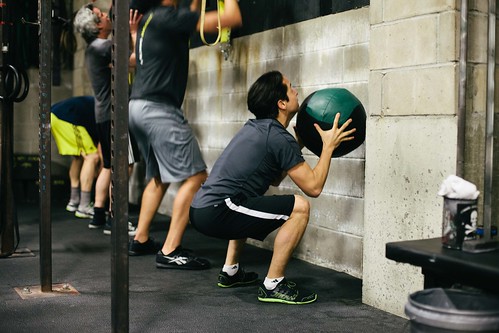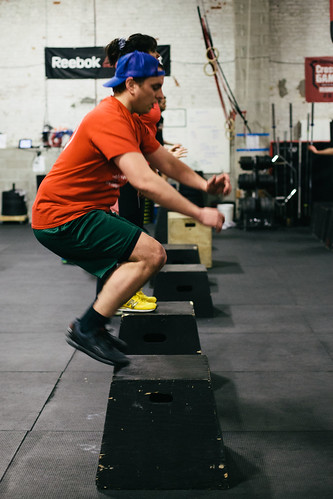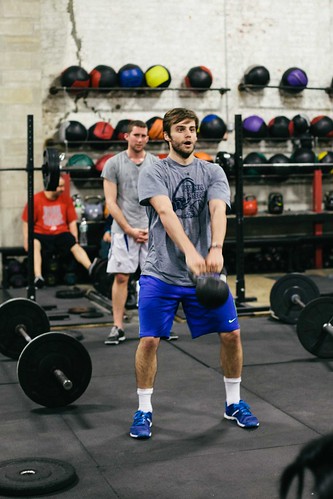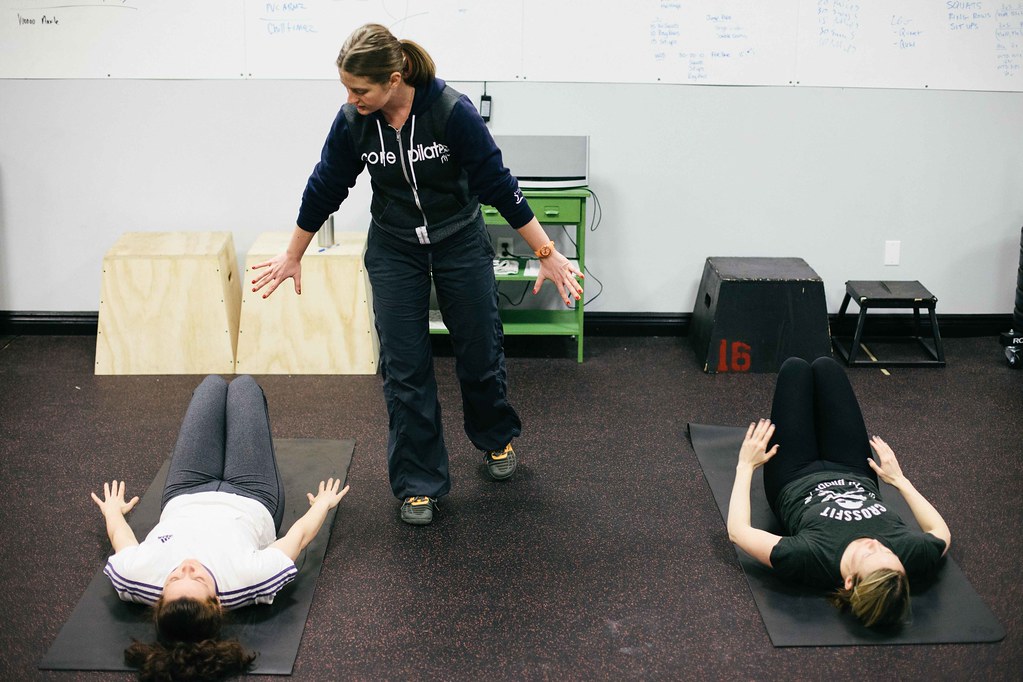For time
21-18-15-12-9-6-3 reps of:
Thrusters, 95 / 65 lb.
Burpees
For the full workout description, click here.
To keep classes running on time, we’re going to cap this workout at 25 minutes. Athletes can assign themselves a one minute penalty for every rep they don’t finish under the cap.
Alternate WOD
For time
21-18-15-12-9-6-3 reps of:
Wall Ball Shots
Burpees
 Eduardo C getting down with Wall Ball
Eduardo C getting down with Wall Ball
Bring Your Shoes Back
We got our new shoe racks in from BLKWD inc. We think with the new space we’ll be able to fit most if not all the shoes we had originally. Here are some shoe storage rules:
- Please write your name on the heel of your shoe somewhere. The front Desk has gel pens that work great for this.
- To maximise cubby storage, please store your shoes on top of each other with one heel and one toe facing out.
- Shoes can be stored below the bottom steel framed rack on the floor. Do NOT put shoes ON the steel racks, those are for bags.
- The Front Desk has shoe spray, we will make occasional sweeps to all the shoes but please take the time to spray your own shoes about once a week.
Please fill out our Feedback Form!
CFSBK wants to hear from you! Please take a couple minutes to fill out this feedback form regarding your experience, opinions and requests for what we offer and do at CFSBK.
Shauna S wants you to know about the Pat’s Run
As many of you know, Pat Tillman played in the NFL for four seasons with the Arizona Cardinals. After 9/11, Pat declined a huge contract to enlist and serve as a Ranger with the U.S. Army. Pat lost his life while serving in Afghanistan.
All New York-area residents have the opportunity to honor the legacy of Pat Tillman and support veterans, their families, and the Tillman Military Scholars program by participating in Pat’s Run NY Shadow Run on Saturday, April 26, 2014 at 12:00 pm. Through a partnership with EY Veterans Group and the ASU Alumni Association, the New York Shadow Run will begin at Pier 84 near the Intrepid Museum and will continue south down the West Side Highway and finish at the World Trade Center. To date, 290 Tillman Military Scholars representing 37 states and attending 74 academic institutions nationwide, including many here in New York, have been awarded more than $3.8 million.
_______________________
Can you spot the liar? NYT
SLOW LIFE
Chemists endorse marinating meat in beer



